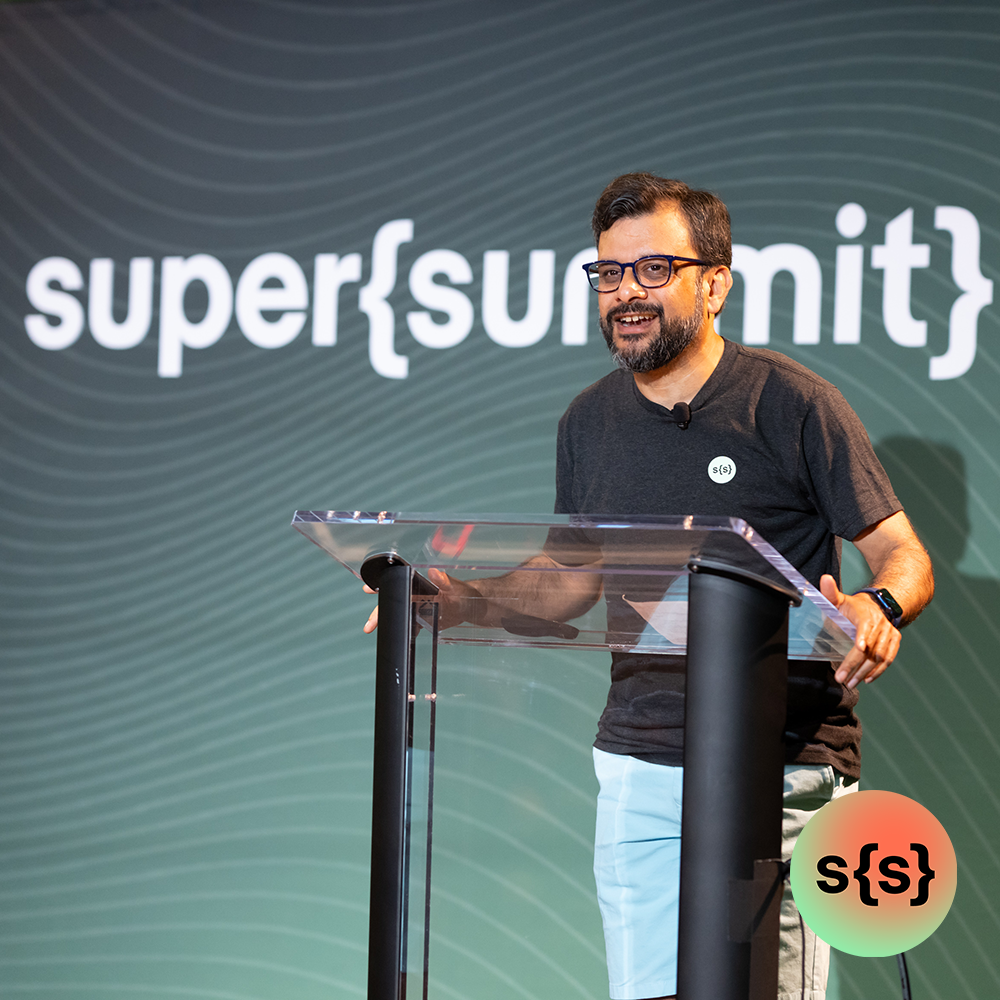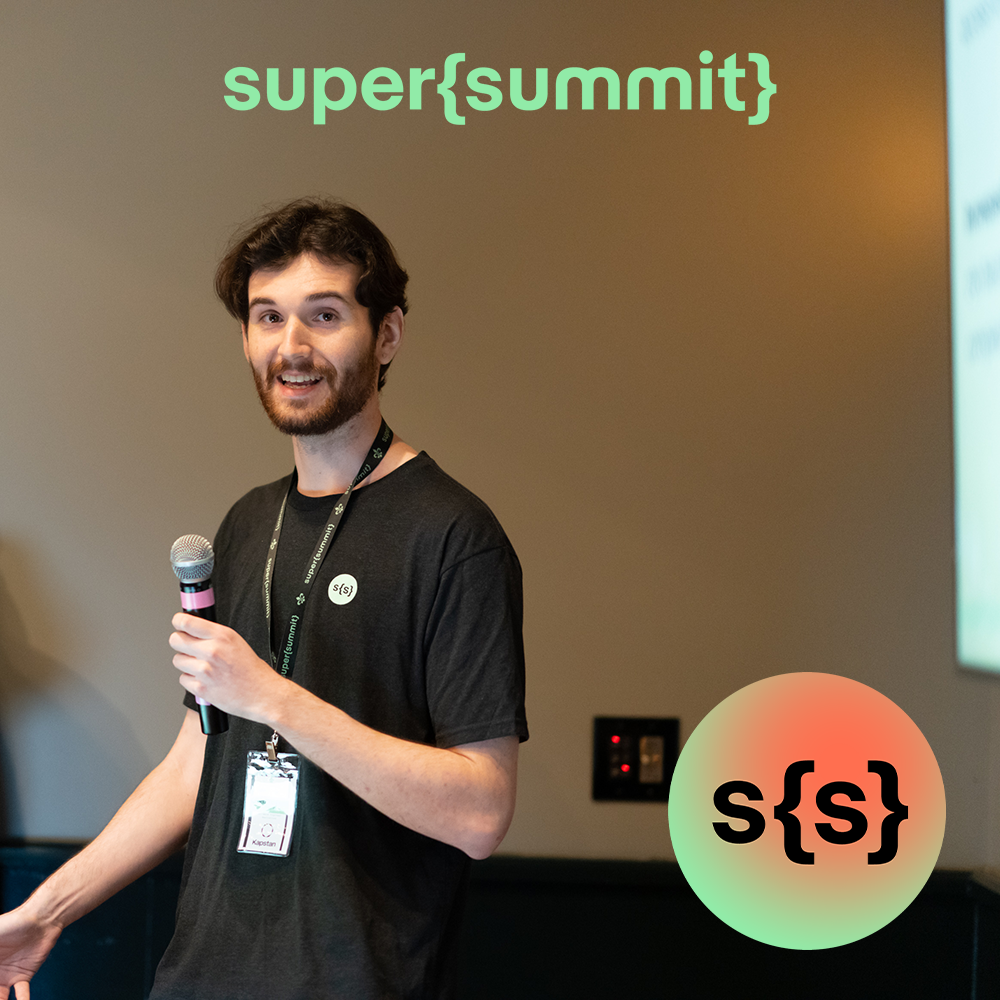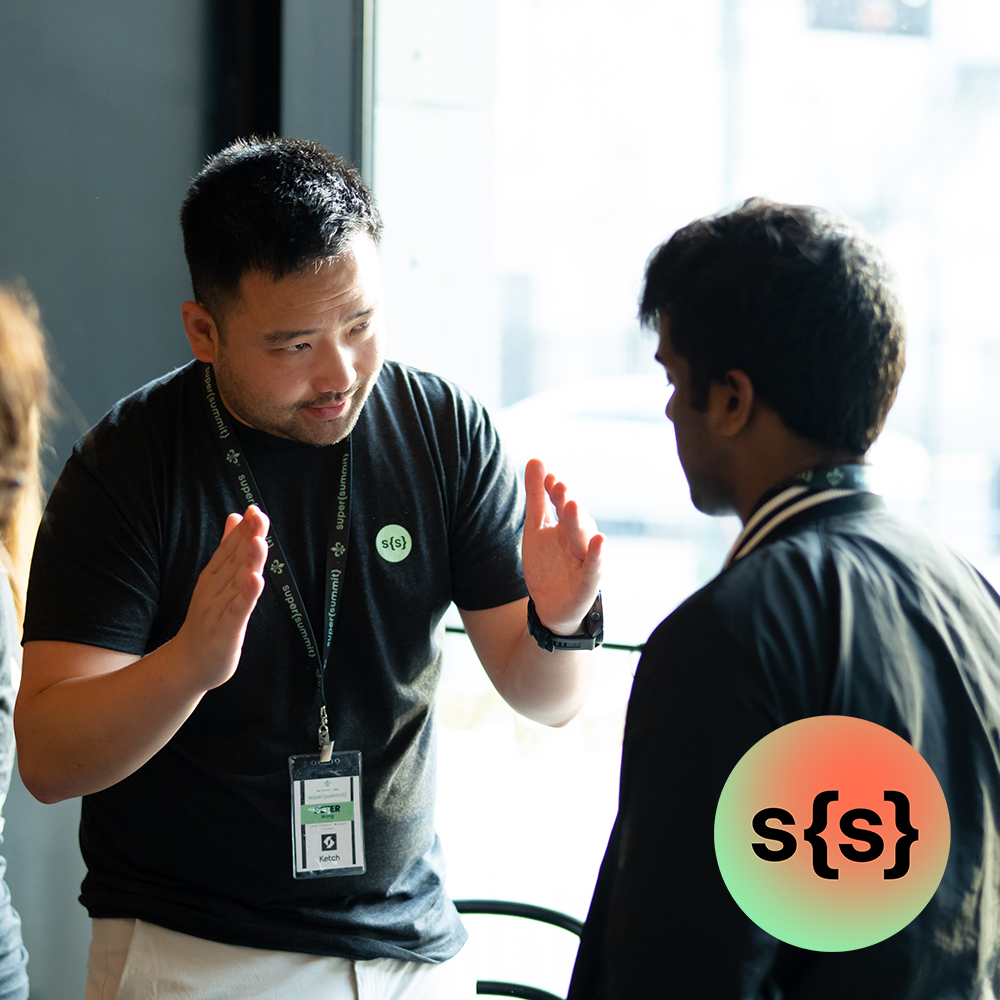
Horizontal Scaling at super{summit}
Engineers are very, very good at talking about the how. That’s because we solve problems. We combine what’s already out in the world - from languages to repositories to references and frameworks - to get the job done.
That’s part of the reason we started super{summit} in 2022 and why we held it again in May 2023 in New Orleans. Engineers, at least the ones I like to work with, are incredibly proud of the work they do but don’t always have a good forum for showing it off outside the teams and companies they work for. super{summit} creates that space for techies to show off, nerd out, grow, and adapt.
The how is an engineer's imperative because engineering is about practice, not theory. But those who work with me know that I’ve always been a proponent of the well-rounded engineer who is also asking after the why, the what, and the so what. We do that by taking the critical thinking skills honed in tackling a problem and applying them to an even broader context.
In my opening remarks at the Ace Hotel in New Orleans this past summit, I asked all super{summit} attendees to consider the concept of horizontal scaling and invited them to depart from conventional thinking to push the boundaries of what is possible in early-stage company building. Here’s what I mean:
Horizontal Scaling Yourself
Most Engineers are familiar with the concept of Horizontal Scaling vs. Vertical Scaling when it comes to databases, application servers, data processing pipelines, etc. Any time a system needs to scale - as in handle more load (requests, volume, etc.) - Engineers have 2 options: Vertical Scaling where they can simply add more capacity (CPU, RAM, Storage, etc.) to the existing machines in the system or Horizontal Scaling where they add more machines with configurations similar to the existing ones. Horizontal Scaling has many benefits, the primary one being fault tolerance - with more machines, the system is able to gracefully handle failures in one or more machines. The thinking being that the likelihood of all machines going down at the same time is very, very low, so the more machines you have, the more fault tolerant your system is.
This concept of Horizontal Scaling of systems can be applied to your Engineering career as well. And it’s an apt metaphor for what we are trying to do at super{set}. For this super{summit}, my goal was to challenge every techie - Software Engineer, DevOps Engineer, Data Scientist, Machine Learning Engineer, Product Manager, Solution Engineer, etc. - to think about horizontally scaling themselves! If you’re a Software Engineer, think about adjacent areas like Product Management (“what business problem are we trying to solve?”) or DevOps (“how does my service get deployed to Production?”). If you’re a Data Scientist, ask yourself, “how does the model that I just built in my Jupyter Notebook get to Production?”, or “how can I measure the performance of my model using business metrics in addition to Precision, Recall, and F1-score?”.
Specifically, my challenge was this: every techie should seek to understand the profound why, what, and so what behind our work. Why did we choose this path? What problems are we solving? What is the impact on the end-user and customer? Horizontal thinking is not just about solving problems for the problem's sake but being more efficient with your limited resources to solve the right problems creatively.
And boy did the super{set} Hive respond to the challenge! Hearteningly, I saw the engineers, product leaders, and brilliant minds at super{summit} embrace this concept. Horizontal scaling was ever-present in our discussions, prompting us to dive deep into the intricacies of engineering and product development. It challenged us to consider the symbiotic relationship between technology and its human recipients and pushed us to broaden our perspectives and adapt to the evolving needs of our customers.
So, to connect my opening exhortation to “horizontally scale yourself” to the rest of the programming we experienced at super{summit} 2023, I have three distinct takeaways that resonate with me that I want to share with everyone in the super{set} Hive:
- The ‘So What’ of AI Alignment
- Self-Awareness and Reflection are Necessary for Leadership
- Give Yourself Space for Creativity
The ‘So What’ of AI Alignment
The first takeaway is from the keynote presented by Brian Christian, who spoke on the “alignment problem”, a longstanding challenge in AI development. In short, it means ensuring that AI systems not only possess impressive capabilities but also behave in a manner that aligns with what we, as humans, truly need the systems to do. These systems need to tackle thorny issues of bias and representation, model transparency and interpretation, which have enormous implications for business and society.
The Alignment Problem becomes even more challenging as Generative AI, ChatGPT, Large Language Models have taken the world by storm. These models can generate text based on an extensive corpus of data but also come with risks. Failure modes often emerge, like producing arbitrary or irrelevant responses and perpetuating biases present in the training data.
In tackling the alignment problem, Christian introduced the concept of reward models as a potential solution. Rather than manually specifying the objective or reward function for AI systems, he proposed leveraging the collective input of users to teach these systems. By incorporating user comparisons and rankings, AI can infer human preferences, guiding the generation of text that aligns more closely with what it was intended to do.
The crux of Brian Christian's keynote lies in recognizing that addressing the alignment problem requires a multidimensional approach—one that embraces human feedback and preferences. It's not just about raw capability; it's about ensuring the harmonious alignment between AI systems and human values. It’s up to us techies who are building the systems harnessing and improving AI to consider the second-order so what implications of the what and the how, and to think critically to align AI.
Self-Awareness and Reflection are Necessary for Leadership
My second big takeaway comes from the engineering leadership panel that I had the privilege of moderating. The panel featured seven exceptional leaders from the Hive. Throughout our discussion, these leaders shared their journeys and the invaluable lessons they’ve learned and are still learning.
As I listened to their experiences, a theme emerged: the importance of self-awareness and adaptability for company building. It became clear that as leaders, we must recognize and implement these principles to navigate our ever-evolving industries successfully.
For myself, I have realized that the act of reflection requires intent. That means carving out time for it. It’s very hard to do that during the course of a regular work day. So, my moments of reflection come during my runs. I started running during the early days of the pandemic and it’s the one time when I am completely alone with my thoughts because I don’t have any electronic devices with me when I go on my runs. Well, I do have my Apple Watch on me; sometimes. No phone, no music, just me and my thoughts. I have also discovered that this is a good way to explore different parts of San Francisco and keep my mind alert because I am not relying on Google Maps for navigation ;-).
I thought about horizontal scaling while I listened to panelists speak about how they navigated challenges related to the pandemic. Tailoring solutions to meet the unique needs of different teams while also finding ways to maintain productivity requires us to expand our understanding and actively seek ways to work efficiently.
Crucially, this adaptability extends beyond logistical considerations—it encompasses treating team members with humanity and respect during times of challenge and difficult decisions. By fostering a culture of trust and support, we nurture resilience within the team, empowering them to overcome obstacles and thrive.
Give Yourself Space for Creativity
We concluded the super{summit} on a high note with a conversation betweenTom Chavez, and Seamus Blackley, a true renaissance man with an impressive background in jazz music and theoretical physics. Blackley's collaborations with industry giants like Steven Spielberg and Bill Gates, including his instrumental role in creating Xbox, provided the backdrop for a fascinating session.
With his signature blend of humor and insight (physics nerds will appreciate the URL of his personal website, klogw.com), Blackley emphasized that builders are doing something creative, cool, and completely new: crafting something of value from nothing. It sounded very much like a day in the life of a super{set} builder!
Blackley brought up the famous story of Richard Feynman and the Wobbling Plate. Feynman, the celebrated quantum physicist and Nobel Prize winner, was in a period of depression following the death of his father and just couldn’t get his research done. He was bored by it. To pass the time, instead of working, he started solving problems for fun based on the everyday physics he observed in his day-to-day life. While in the cafeteria one day, he observed a group of undergrads goofing off and spinning their dinner plates like basketballs on a player’s fingertip. Inspired, Feynman attempted to translate the motion of the wobbling plates into the language of math and physics, ultimately leading him to the research that earned him a Nobel.
Blackley’s point here is that you can’t force creativity in problem-solving. You must give yourself space; likewise, if you are a leader, give your team space. For the individual - maybe it means allocating some of your time to a “random walk,” be it a literal walk around the block or some browsing of Wikipedia. For the leader - it means stepping in to provide guidance when your team is off-target but otherwise stepping back and allowing for personal accountability and creativity.
As we aim to solve complex problems in software and product development, if we’re hyper-focused on the “how” we will miss the creative breakthroughs - often involving the why, what, and so what - that only comes when we give ourselves space for creativity. Horizontal scaling yourself is not simply about considering the end customer or being able to lead a productive team (although those things are important) - it’s fundamental to the creative process.
And Now, We Build
super{summit} 2023 was an unforgettable experience that brought together a diverse community of innovators, thought leaders, and creatives. And this recap only scratches the surface of the wealth of knowledge and inspiration we shared. There were also countless networking opportunities, interactive panels, and lively happy hours – to say nothing of the after-hours shenanigans on Bourbon Street – that added an extra layer of value and, importantly, fun and joy to the overall experience.
I want to thank the super{set} community for their unwavering support and participation in making the super{summit} a resounding success. Their enthusiasm, engagement, and contributions were the driving force behind the event's energy and impact. Plus, I had a lot of fun.
Although we set a high bar in New Orleans, I’m excited to see how the super{summit} evolves into its third year.. Let’s stay connected, keep learning, and commit to the ongoing journey of the super{set} community. Now, back to building!
Vivek Vaidya
Tech, startups & the big picture
Subscribe for sharp takes on innovation, markets, and the forces shaping our future.
Let's keep in touch
We're heads down building & growing. Learn what's new and our latest updates.


